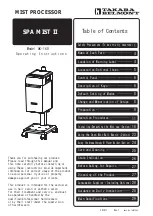
PDF: 4749051511/Source: 7788125767
Aptina reserves the right to change products or specifications without notice.
MT9T111_DG - Rev. B 9/10 EN
94
©2007 Aptina Imaging Corporation. All rights reserved.
MT9T111: Developer Guide
Anti-Shake
Preliminary
Anti-Shake
Introduction
As mobile devices become smaller, unavoidable handshaking or moving subjects make
it difficult for a user to hold a slim mobile camera steadily enough to get a flawless
image, especially when exposure time increases due to low-light conditions. To reduce
motion blur, the MT9T111 includes an anti-shake mode. When motion is detected, the
anti-shake controller will increase the sensor gain and reduce the exposure time. The
anti-shake control reduces the motion blur caused by a shaking camera.
The anti-shake control runs only when transitioning from a preview context to a capture
context, and cannot be used during streaming preview for stabilized viewfinder or video
applications.
Algorithm Description
The anti-shake algorithm uses motion detection statistics from the sensor. The anti-
shake algorithm (as shown graphically in Figure 54) uses two successive image frames to
compute a motion estimate. The two frames are not output from the camera; only the
statistics are output. The two frames are exposed at the fastest speed possible, given the
current total exposure and camera gain constraints. The image size is constrained to be
VGA or greater for this operation.
Figure 54:
Anti-Shake Algorithm
The anti-shake algorithm is launched when transitioning from preview to capture. The
algorithm assumes control from the sequencer when switching between these modes.
Settings for AE, AF, and AWB are finalized during preview.
During the first frame, the algorithm identifies eight regions of interest for which to
compute motion. During the second frame, the algorithm computes motion for the
identified regions of interest. Based on these motion estimates, the algorithm deter-
mines the optimal balance of exposure and gain for the scene.
After determining the combination of gain and exposure, the algorithm returns control
to the sequencer, which configures the camera for capture. Following the capture, the
camera is returned to the original gain and exposure combination to minimize visual
transition effects.
Preview
Frames
Finalize
AF, AE,
AWB
Preview
Preview
Image
Capture
Anti-shake
Control
Adjust
Exposure
and Gain
















































